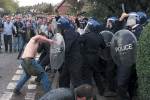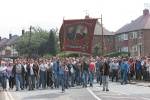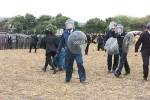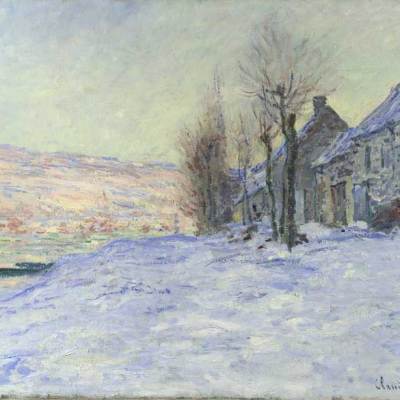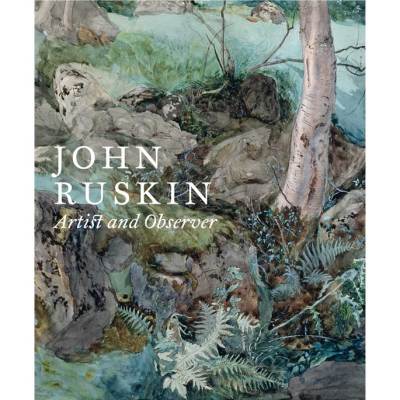Art is crucial to our understanding of history. From ancient Greek amphorae depicting scenes of battles and myths to the personality cults created by Renaissance portraiture, art can illustrate things about the past that language cannot.
It’s odd to think of 1980s Britain in these terms, but such an approach is not, in my opinion, entirely without worth. Today marks 30 years since the Battle of Orgreave, the fateful confrontation outside a South Yorkshire coking plant that pitted 6,000 pickets from the National Union of Mineworkers against a force of 8,000 riot police. The result was scores of injuries on both sides and the arrest and subsequent charge of 95 miners.
The event had significance far beyond its immediate consequences; we remember it now as the moment that Margaret Thatcher’s Conservative government smashed Union power and began the rapid dismantling of British industry.
Much of the contemporary television coverage made it seem as though the striking miners were entirely responsible for the violence. In London, to quote Thatcher’s infamous epithet, the miners – and by extension the Unions – were seen as ‘the enemy within.’
This was not just a strike – in the Churchillian historical narrative that the Prime Minister offered her followers, there was little distinction between the pitmen of South Yorkshire and the Argentinian marines she had expelled from the Falklands two years before. Opposition to her view was opposition to Britain’s heroic destiny.
Naturally, those who were affected did not buy into Thatcherite rhetoric. The consequences of the failed nationwide miners’ strike – which lasted almost a year – were disastrous for areas where coal mining had been the principal form of employment. Around 160,000 people lost their livelihoods, and many would remain unemployed for a long time to come due to a chronic lack of job creation.
They felt they had been swept under the carpet, ignored by politicians and forgotten by the rest of the country. Orgreave was a bitter folk memory, rather than a recognised counter-history to the ones promoted by Thatcher and later Tony Blair. All discussion was polarised, clouding the testimony of those involved and leaving no room for reasoned analysis.
Seventeen years later, when Jeremy Deller began work on his Artangel commission to recreate the events of June 18th 1984, he described it as ‘digging up a corpse and giving it a proper post-mortem.’ Deller had never forgotten the television coverage of the Battle of Orgreave, and was acutely conscious that Britain had yet to come to terms with the upheaval of the 1980s. His aim was ambitious: to give the events of the past the dignity of historical perspective.
The work played on the idea of historical re-enactment, a phenomenon that had become extremely popular with amateur historians who wanted to experience the battles they studied as ‘authentically’ as possible. Deller’s reasoning was that by using 800 regular re-enacters and filming the recreation as a documentary, Orgreave would take on the significance of the military engagements performed by the history enthusiasts. Crucially, the event would also involve around 280 people who had been at Orgreave in 1984.
The re-enactment – and thus the work of art itself – is history too, existing only in the minds of the participants. All we have of it now is Mike Figgis’s documentary, which records the obsessive accuracy of the exercise. At times, the cinema-vérité style footage really does resemble the kind of mediaeval battle the re-enacters were more used to performing. Pickets run screaming into ranks of police shields, a cavalry charge forces them back and scores of riot police with short shields and truncheons clear up all those still standing.
The public reaction was in many ways reminiscent of how German artists in the 1960s forced their countrymen to confront the horrors of the Nazi era at a time when they were simply not discussed. Deller had brought the industrial strife of the 1980s back to light and gave a badly needed sense of perspective on what actually happened.
But there is one problematic aspect to the work; as good historians should strive for a degree of objectivity, so Deller and Figgis’s film crew attempted not to dramatise any aspect of the re-enactment. Personally, I’m interested to know whether any former miners considered the project to be too detached – cruelly ironic, even. Perhaps, now that Britain is facing the full consequences of Thatcher’s economic reforms, it’s time to re-examine the re-examination. The Battle of Orgreave – as opposed to the Battle of Orgreave – may actually pose more questions than it answers.
Related Articles

